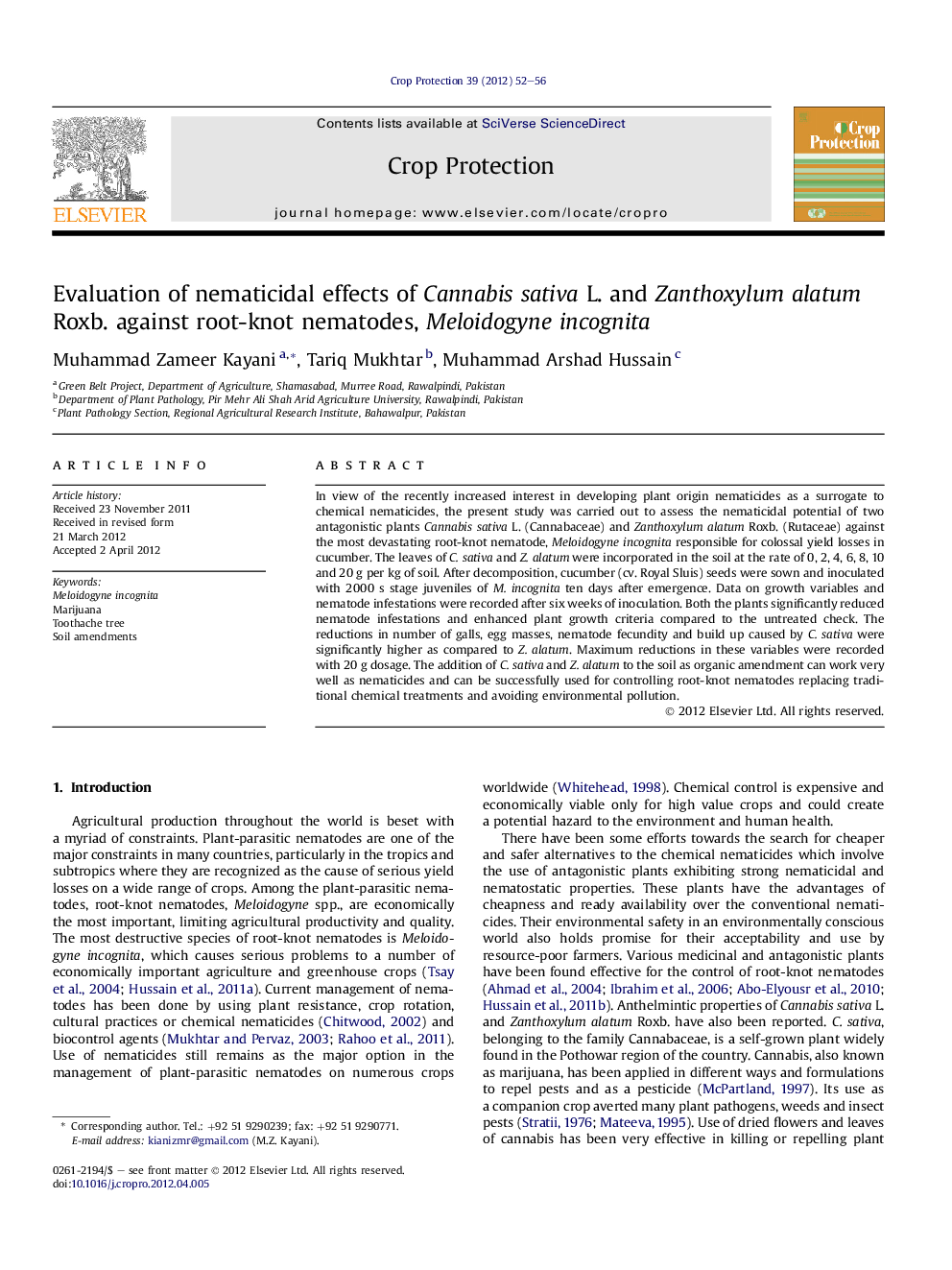| Article ID | Journal | Published Year | Pages | File Type |
|---|---|---|---|---|
| 4506377 | Crop Protection | 2012 | 5 Pages |
In view of the recently increased interest in developing plant origin nematicides as a surrogate to chemical nematicides, the present study was carried out to assess the nematicidal potential of two antagonistic plants Cannabis sativa L. (Cannabaceae) and Zanthoxylum alatum Roxb. (Rutaceae) against the most devastating root-knot nematode, Meloidogyne incognita responsible for colossal yield losses in cucumber. The leaves of C. sativa and Z. alatum were incorporated in the soil at the rate of 0, 2, 4, 6, 8, 10 and 20 g per kg of soil. After decomposition, cucumber (cv. Royal Sluis) seeds were sown and inoculated with 2000 s stage juveniles of M. incognita ten days after emergence. Data on growth variables and nematode infestations were recorded after six weeks of inoculation. Both the plants significantly reduced nematode infestations and enhanced plant growth criteria compared to the untreated check. The reductions in number of galls, egg masses, nematode fecundity and build up caused by C. sativa were significantly higher as compared to Z. alatum. Maximum reductions in these variables were recorded with 20 g dosage. The addition of C. sativa and Z. alatum to the soil as organic amendment can work very well as nematicides and can be successfully used for controlling root-knot nematodes replacing traditional chemical treatments and avoiding environmental pollution.
► Cannabis sativa and Zanthoxylum alatum amendments reduced nematode infestations. ► Reductions in nematode infestations were found to be dose-dependant. ► Amendments at the rate of 20 g caused maximum reductions in nematode infestations. ► Maximum improvement in plant growth variables were observed with a dosage of 10 g. ► Amendments with C. sativa were significantly better than those with Z. alatum.
